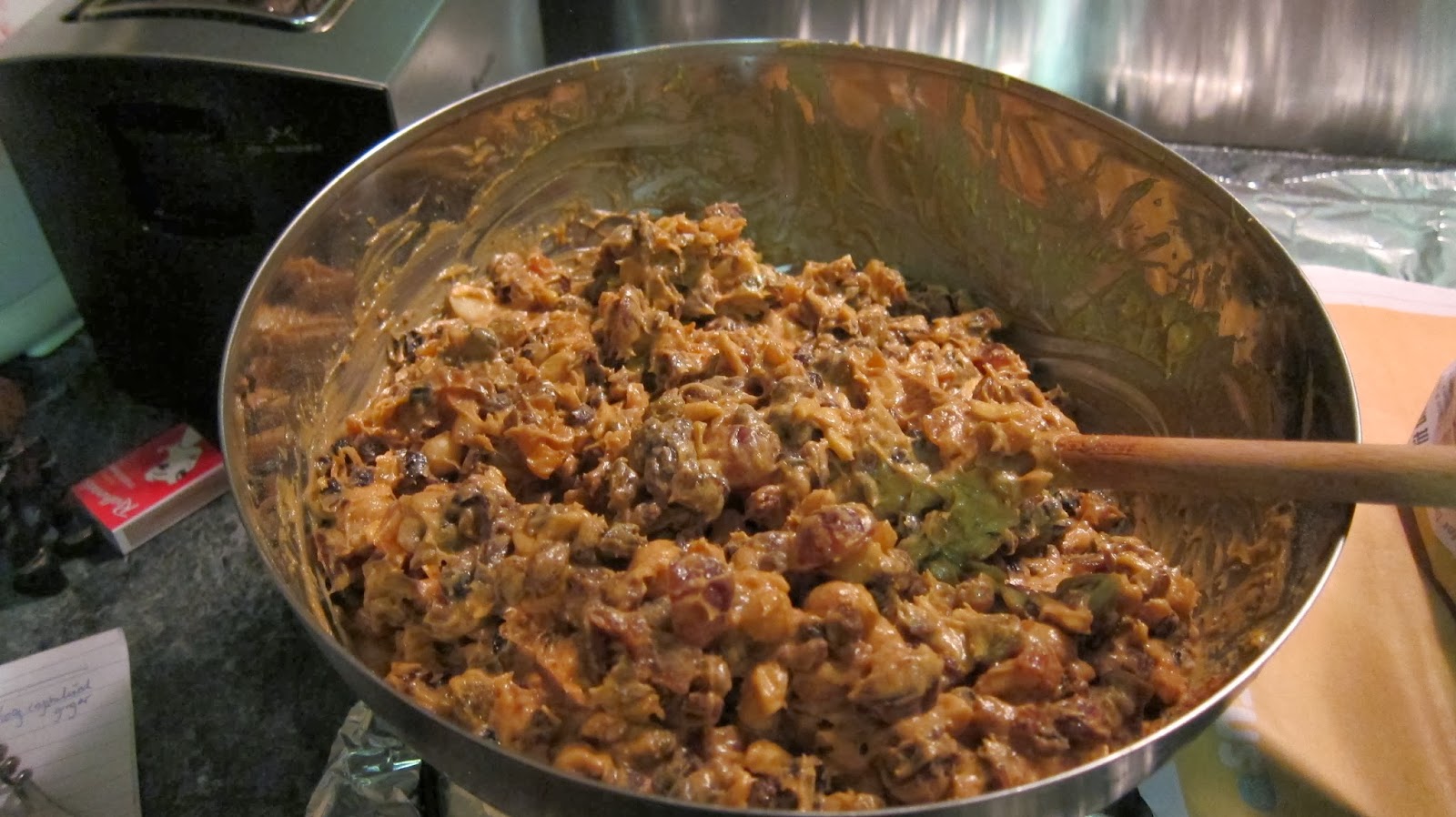Traditional Christmas Cake
Traditional Christmas Cake
'Tis the season to be jolly! Christmas is not complete without a classic Christmas cake. This recipe may look complicated but it is easy if you prepare all the ingredients and line the cake tin before you start. This lovely cake can be made 2 to 3 months before Christmas for it to mature and should be drizzled at intervals with brandy.
• 400 or 450g sultanas
• 225g raisins
• 200g glace cherries
• 100g candied peel
• 100g dried figs
• 100g dried apricots
• 50 or 100g dried ginger
• 100g dried prunes
• 100g macadamia nuts
• 100g slivered almonds
• 150ml brandy
• 1 orange (zested and juiced)
• 250g soft butter
• 200g dark brown sugar
• 1 tablespoon black treacle
• 5 eggs, beaten
• 300g flour
• A pinch of salt
• 1/2 teaspoon mixed spice
• 1/2 teaspoon nutmeg
• 1/2 cinnamon
Note: You can soak the dried mixed fruits the night before in some brandy and proceed with the recipe next day.
1. Heat the oven to 150 degrees celsius. The temperature is low as the cake needs a long slow bake. It is packed with sugars, fruits and brandy and if the temperature is any higher the outside of the cake will burn and the inside be undercooked.
2. Grease with butter and line a 9 inch or 22 cm cake tin with 2 thicknesses of baking paper. Tie a double layer of brown or newspaper paper around the outside with a kitchen string. This prevents the cake from burning on the outside.
3. In a large bowl, mix the sultanas, raisins, cherries, currants, candied peel, dried figs, dried apricots, dried ginger, dried prunes. You may add a little brandy on the night before. Add the spices and the salt.
4. In another large bowl, cream the butter with the dark brown sugar until fluffy. Add in the orange juice and zest. Dust the flour at intervals and add the beaten eggs to the butter mixture a little little at a time. Stir well after each addition until smooth. Try not to rush this process and if the mixture curdles, add a little flour and mix again.
5. Carefully fold half of the fruit mixture into the egg and butter mixture. Once incorporated, repeat with the remaining fruit. Finally, add the 150ml of brandy.
7. Finally, using a piece of paper towel clean up any smears of cake batter on the the side of the greased baking paper. Any residue will burn, and though it won't affect the cake, the smell won't be good.
8. Stand the cake tin in the lower part of the oven, ensure the paper is well away from any flame if you have a gas oven, and bake for 3½ hours. If the cake is browning too rapidly, cover the tin with a double layer of greaseproof or parchment paper after 2 hours. During the cooking time, avoid opening the oven door too often as this may cause the cake to collapse.
9. After 3½ hours check the cake is cooked. The cake should be nicely risen and a lovely deep brown colour all over. Insert a skewer into the centre of the cake. If the skewer is clean, it is cooked. If not, it needs to be cooked for a little longer. When the cake is ready, remove from the oven.
10. Leave the cake to cool in the tin on a wire rack for an hour, then remove from the tin and leave to cool completely. Once cooled, create small holes in the cake by inserting a skewer and slowly pour over 3 tablespoon of brandy. This should be repeated every two weeks up until Christmas.
11. The cake should be wrapped in greaseproof paper and aluminium foil and stored an airtight cake container.

12. In a month leading up to Christmas, layer marzipan (also referred as almond paste) over the cake. To prepare this, you can purchase ready made marzipan at the supermarket. Brush the top layer of the cake with some warmed apricot jam. This will help the marzipan in sticking to the cake.
13. On a flat surface of a kitchen bench or a dining table, sprinkle some icing sugar or flour. Flour your rolling pin with some flour and roll the marzipan evenly.
13. Roll the marzipan half way through the rolling pin and fold it over the cake, making sure the layer is centred and fully covers the cake. Smooth out the cake with your hands or a pair of icing smoothers. Cut out the excess marzipan with a small fine knife.
14. Repeat this process with the icing sugar layer, two weeks before Christmas. You may purchase ready made icing sugar from the supermarket. To help the icing sugar sticking together with the marzipan, brush the marzipan layer with some brandy. Once the icing sugar is layered and smoothed out, store it in an airtight cake container.
15. On Christmas day, decorate the cake before serving. I have dusted the cake surface with some icing sugar and decorated it with a few silver cachous and Christmas ornaments.













Comments
Post a Comment